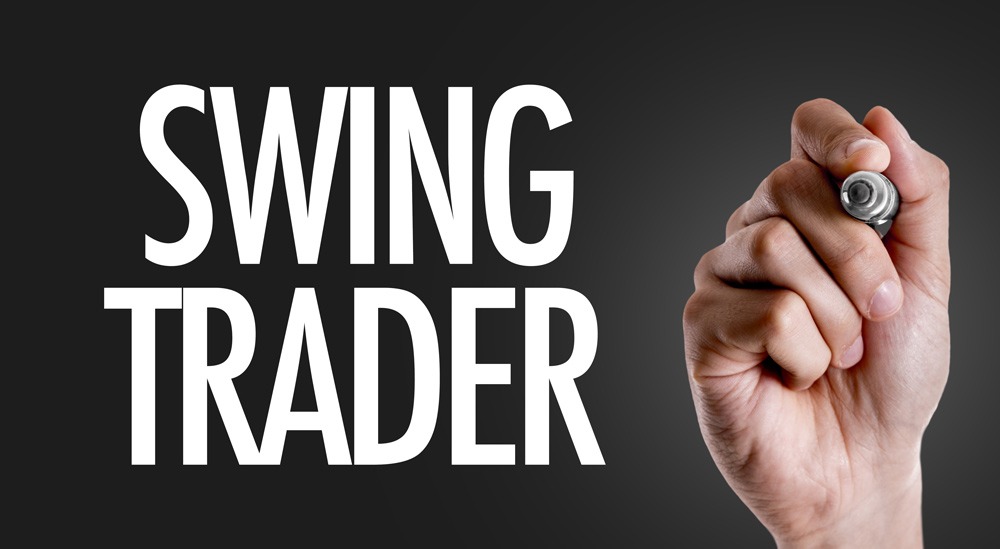What Are The Benefits Of Swing Trading In The Forex Market?
Swing trading is a trading style that aims to generate short to medium-term profits. The trade duration ranges from several days to weeks and is clearly different from scalping or day trading.
The trader does not limit himself and allows trades to run overnight. Which financial instruments are selected is, in principle, irrelevant. It can be stocks, cryptocurrencies, commodities, indices or futures.
Swing trading is about identifying possible upward or downward movements and capitalizing on these price movements.
How Does Swing Trading Differ From Other Forex Trading Styles?

Unlike day trading, where positions are closed within a day, swing traders maintain their positions over a period of a few days to weeks and attempt to make profits during that period.
The goal is to maximize your profits by making smart investment decisions. A basic understanding of technical and fundamental analysis is at least as crucial as the right timing.
A lucrative opportunity for everyone who works and therefore doesn’t necessarily have all the time in the world for trading. The time required for swing trading is relatively low, in contrast to many other strategies.
Swing trading only makes sense if you do it correctly. Like any other trading strategy, swing trading also presents a number of challenges. It all depends on what trading type you are.
If you prefer not having to look at the screen regularly and open and close your positions over a medium-term period, then swing trading strategies are certainly one of the interesting trading styles that you should have on your radar. However, if you want to trade actively and at short intervals, then other trading styles may be better for you.
What Are The Advantages Of Holding Positions Longer In Swing Trading?
You have now learned about some swing trading strategies that can be potentially profitable. But is swing trading always profitable? Can you always achieve high profits with this?
Here too the answer is no. It is true that swing trading offers the potential for higher returns compared to long-term investing, especially because there are many opportunities to profit from both rising and falling markets. There are also limits to profitability depending on how much your capital allows.
However, a major disadvantage of this method is the stress involved. Because the open positions must be checked and updated regularly. At least if you choose a relatively short time frame for your trades.
While market volatility is a potential friend, it can also sometimes become an intimidating enemy, leading to significant losses. And there is always the risk that the market will change overnight and turn a promising position into a losing position before you, as a successful swing trader, have the chance to react. Swing trading therefore carries an extremely high risk.
What Swing Trading Strategies Help Capture Medium-Term Forex Trends?
The most popular swing trading strategies include, for example, the trend following strategy or breakout trading. Which strategy is right for you depends on your individual risk tolerance and your understanding of the market.
If in doubt: keep it simple! Don’t get too caught up in complex indicators and patterns, but use methods that have proven successful in the past. Over time, you can try different methods as long as the profit is right and you are in the black.
In swing trading you can choose, among other things, 1-week charts for analysis to initially get an overview. However, one question remains: when should you open or close a trade?
The answer here is: It always depends on the market conditions! The decision to close a trade always comes down to one of the following two scenarios: either the market has reached the assumed price target or the market moves contrary to the original assumption, triggering a stop loss order. At least the take profit orders and the stop loss orders should always be set correctly.
However, successful swing trading is not limited to choosing two indicators. Sometimes there are multiple indicators that show whether a swing trade is worthwhile or not.
Regardless of which option you choose, it requires discipline to stick to predetermined exit points and resist the temptation to wait for more gains or to hope that a losing trade will reverse.
How Can Swing Traders Identify Entry And Exit Points In Forex Pairs?

In this section I want to explain in more detail how swing trading works. The basic assumption of swing trading is that financial markets are subject to price fluctuations, which are the result of supply and demand.
These “swings” are variables that are constantly changing. There are swing highs and swing lows , as can be seen in the image above.
For example, if there is company news that indicates a negative forecast, in many cases it can be concluded that prices will move downwards. The situation is similar with events that have a significant impact on market activity.
Socioeconomic trends and general market sentiment determine what happens to the price of a particular financial instrument, i.e. whether the price moves up or down. These factors form the swings.
As a swing trader, your job is to identify exactly such changes and trade them in the short to medium term. You usually use advanced charting tools to recognize and evaluate candlestick patterns and market trends. It is a trading strategy that requires one thing above all: observation of the markets.
Commonly used indicators in swing trading include moving averages, the Relative Strength Index (RSI) or trading volume. But there are also special swing indicators. These help to better classify what is happening and to find the swings that you can trade long or short.
What Risk Management Techniques Are Effective For Swing Traders?
This section is dedicated to the topic of risk management. Due to the high volatility of the assets that should be chosen for swing trading, managing risk correctly is not just a nice-to-have, but a crucial part of a thoroughly thought-out strategy.
Stop-loss orders and good take profit levels will become your constant companions as part of good risk management. The stop-loss order is particularly helpful because it automatically closes the position if the market develops unfavorably, thus limiting the potential for losses.
On the other hand, the take profit ensures that you are not overwhelmed by greed and ensures profits at a predetermined level. Even with low take profit orders, small profits can be made that add up! You should never overdo it here either, as this can backfire.
These two orders (SL and TP) are absolute basics and should always be placed when swing trading. Especially if the internet goes down or you suddenly experience technical difficulties, it proves to be extremely helpful to have this kind of risk management in place, as it means you are on the safe side and don’t have to worry about losing more than you would like.
The topic of position sizing is also invaluable, as it prevents traders from putting all their eggs in one basket. Always use these three risk management tools and feel free to take a look at our detailed article on risk management where we cover the topic in detail if the topic interests you.
See you in the next post,
Anil UZUN
